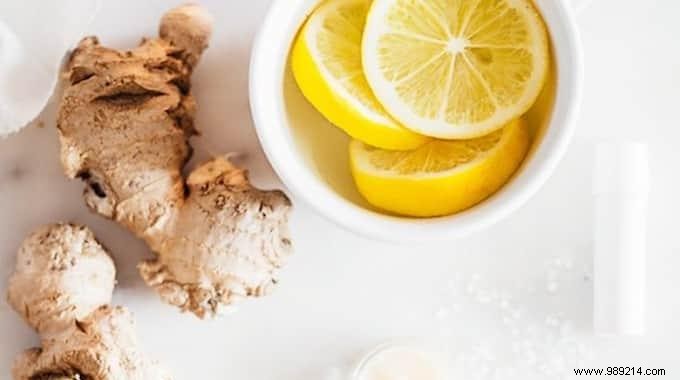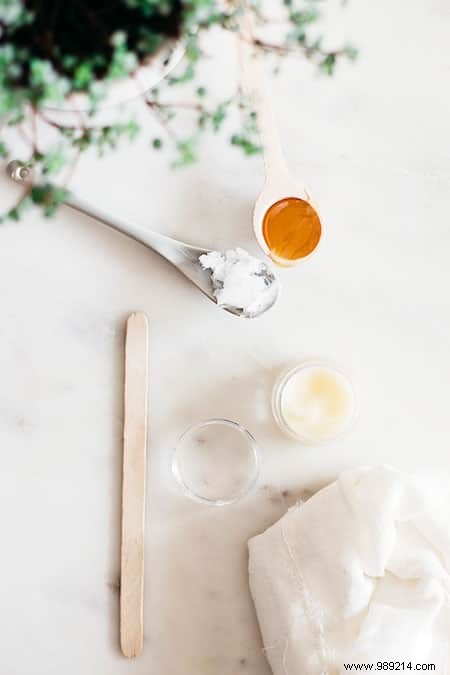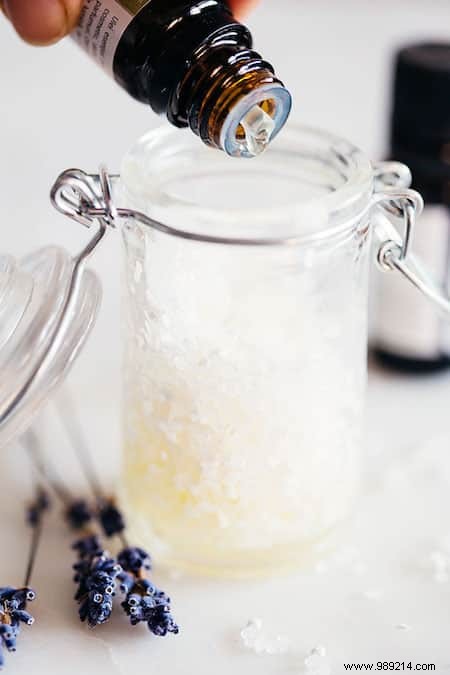
Influenza. This is the time of year when everyone is talking about it.
Should I get vaccinated? What is the strain of the moment?
In short, all kinds of questions that announce nothing very exciting!
From a scientific point of view, the flu virus mainly attacks the respiratory system.
It does this through one of its 3 strains called Myxovirus influenzae A, B and C (whoever named these strains must not have been very inspired).
When you get sick, your body becomes a veritable battlefield, a battle that takes place at the microscopic level.
The virus attempts to enter your body and take control of your cells, multiplying and killing them.

The problem is that there aren't really any treatments that work against these viruses.
Fortunately, there are many home remedies that actually relieve and reduce symptoms due to the flu.
These natural remedies have the power to keep your body as robust as possible, so that it can fight the virus well.
Also, be aware that the flu virus should not be confused with gastroenteritis, also called "stomach flu".
Here are 6 natural and effective flu remedies:

This remedy seems so obvious that you might think it's a cliché. But that doesn't make it bad advice! Indeed, clichés are sometimes clichés for good reasons.
Often, we are so concerned with finding a quick and effective remedy that we completely neglect the basic remedies . However, it is essential to drink plenty of fluids , for several reasons.
The first is to control the fever . The flu raises your body temperature and causes you to sweat, thereby lowering the amount of fluid in your body.
Staying hydrated is common sense. This will keep your body in good working order, which is essential when you are sick.
In addition, a sufficient intake of clear liquid improves your general condition and reduces pain.
Finally, proper hydration keeps the mucous membranes moist , helping your body to fluidize secretions .
What you need: fresh water, chicken broth, tea.
How to: drink only light colored liquids such as water, tea or chicken broth. When you have the flu, you will have little appetite. Clear liquids are particularly suitable because they are easily digested by the stomach and provide the nutrients and hydration necessary for the proper functioning of your body without tiring it further.
To discover: 11 Great Benefits Of Water For Your Body That You Didn't Know About!

Ginger is one of those superfoods that relieves almost any ailment imaginable:stomach aches, stuffy nose, nausea or inflammation.
Plus, you can grow an unlimited amount of it at home for free.
When you're sick, a nice hot cup of ginger tea chases away colds, helps unclog your nose , and can even relieve those horrible aches .
Several studies have shown that ginger can warm you from the inside thanks to gingerol, one of its main constituents. Indeed, gingerol improves blood circulation , while slowing the formation of clots.
If you suffer from aches during a flu, know that it is normal! Why ? Because your body is waging a furious attack against the invading virus.
Acute inflammation of muscle tissue is a natural reaction of your body when white blood cells and certain proteins are activated to get rid of the virus.
2 actors are in action:prostaglandins and leukotrienes, powerful inflammatory agents. Fortunately, the gingerol contained in ginger is there to relieve inflammation and thus reduce the pain associated with body aches.
For this remedy to be effective, the secret is to macerate the root of the ginger. Indeed, because of its solid texture, ginger must be simmered over low heat for 30 minutes to extract all its healing benefits.
To sweeten the taste of the infusion, I also add a little honey and lemon, also known for their health benefits.
What you need for 4 cups: of fresh ginger (about 5 cm), fresh lemon, honey, 1 liter of fresh water.
How to: cut the ginger into slices and put them in a small saucepan with the water. Cover the pan and heat over low heat. Let simmer for 25 to 45 minutes. For a more concentrated infusion, let the ginger macerate overnight (optional). Strain the ginger slices using a colander. Pour the liquid into your favorite mug. Add a squeeze of lemon, a touch of honey and enjoy!
To discover: The 10 Benefits Of Ginger You Absolutely Need To Know.

If you have particularly severe muscle pain, this easy to make balm recipe will help you sleep better.
This homemade balm contains wintergreen essential oil. Also known as wintergreen , this shrub naturally relieves pain.
It is wintergreen that inspired the creation of aspirin that we all buy in pharmacies. In fact, wintergreen is made up of 85% methyl salicylate, the main ingredient in aspirin.
Be aware that wintergreen is a particularly powerful natural remedy. In fact, this balm should be used sparingly and is not suitable for children. Even though it only contains natural ingredients, that doesn't mean that this balm is risk-free. Indeed, some people may experience toxicity if they use this type of analgesic (painkillers) in too large quantities. These are rare cases but it is better to take precautions.
Remember that before the advent of modern medicine, it was thanks to natural remedies that humans were cured and stayed alive. Therefore, let's never forget that natural remedies can also be very powerful.
What you need: 2 tablespoons beeswax, 4 tablespoons coconut oil, 10 drops wintergreen essential oil.
How to: melt the coconut oil in a bain-marie. Add the beeswax, and wait until the mixture is completely melted. Stir until the wax is fully incorporated into the oil, then remove the pan from the heat and add the wintergreen. Continue mixing everything until the ingredients are fully incorporated. Pour the mixture immediately into a jar (or other container of your choice).
The pain relief balm can be stored for up to 1 year in a dry, cool and dark place. Apply it sparingly on sore muscles and massage firmly with fingers.

We live in a world where everything is going way too fast... And sometimes, we are not even able to slow down this frenetic pace to rest in bed quietly, even when we are sick!
It's still sad to be so stressed and rushed that we don't even take the time to listen to our body when it tells us to take it easy.
Fatigue is nature's easiest way to communicate to us that it's time to take a break . In the past, these signals kept us alive. So don't think you're fine just because you manage to stay active!
Today it may not be a matter of life or death, but your body is using all its strength to fight the virus, so help it out a bit and rest!
What you need: extra-comfortable pajamas, a cozy place to curl up with a good book (or your favorite series).
How to: there is no shame take time to recover! This is not a selfish or lazy move on your part. It is best to get rid of the flu quickly rather than dragging it out too long, wishing you had a good rest from the start.

Personally, this little trick had incredible effects on my ability to recover quickly from the flu. Sometimes, when we are sick, the simple act of taking a shower has the power to transform us.
It's as if we got rid of this nasty layer full of germs. Lo and behold, a brand new “we” appears, much healthier.
Why does it work? Because hot water relieves aches and chills and works wonders against congestion. You feel much better leaving the shower than entering it.
Aside from the decongestant effect of heat and steam, is there any other scientific explanation behind the benefits of a good hot shower? Not really!
But if like me, showers help you feel better, why hesitate? Afterwards, you can slip back into your cozy pajamas and curl up in bed feeling clean and fresh , which makes it even easier and more pleasant to relax… and heal !

The essential oils contained in these bath salts are perfect for chasing away flu-related sluggishness, as they have soothing, healing and invigorating properties .
Tea tree and eucalyptus essential oils combine to eliminate germs and clear the mucous membranes . A touch of lavender essential oil helps the body relax and de-stress .
For this recipe for homemade bath salts, use the proportions you want. Personally, I prefer to put a little more tea tree and eucalyptus than lavender.
Magnesium sulphate fights muscle soreness and hot bath water rids you of chills.
What you need: 6 drops of tea tree essential oil, 3 drops of eucalyptus essential oil, 2 drops of lavender essential oil, 250 g of magnesium sulphate, 2 tablespoons of oil of your choice (olive , grapeseed, jojoba, etc.), a jar, or any other glass container with an airtight lid.
How to: in a bowl, mix the essential oils with the oil of your choice, pour the magnesium sulphate into the jar. Add the oil mixture to the jar and mix, until the oils are well incorporated into the magnesium sulfate. Fill the tub halfway with hot water. Add 2 or 3 tablespoons to hot water, then fill the rest of the tub. Finally, sit back, relax and breathe deeply! Remember to shake your bath salts well before each use, as the oil tends to separate from the sulfate.
To discover: 19 Secret Uses of Magnesium Sulfate.

The flu and the common cold both affect the respiratory system, but there are several notable differences between them. Despite these differences, many flu home remedies can also cure cold symptoms, and vice versa.
Indeed, these symptoms are quite similar. It's just that they tend to be more pronounced with the flu than with the common cold. Remember that these symptoms vary not only from person to person, but also from virus to virus. So, the only way to know for sure what you are suffering from is to go see your doctor .
At the beginning: a cold will almost always come on gradually, and often in a very predictable way. You start having a sore throat, and it will heal after a few days. But as soon as it starts to get better, congestion sets in. You have a stuffy nose. A wet cough will clear secretions from your throat and chest. The flu, on the other hand, is pronounced much faster. You can feel great in the morning but totally down in the afternoon.
Nasal secretions / mucus: nasal secretions and phlegm are a good indicator to determine if you have the flu or a cold (but not always, especially if there are complications with the flu, such as pneumonia). A cold tends to start with liquid mucus. Then, these thicken and become darker, thus eliminating the microbes from your body. With a cold, you are constantly blowing your nose. As for the flu, it is accompanied by a dry cough, and it generally produces liquid and clear mucus.
Gravity: most flu and cold symptoms are similar. However, they are much more pronounced in people suffering from the flu, and with much more intense pain. In addition, 80% of flu cases are associated with fever, unlike the common cold where fever is observed only in relatively rare cases in adults. If you have a fever from a cold, be aware that your temperature will not rise as high as if you had the flu (i.e., above 38°).
Duration: you will usually recover from a cold in about ten days. While a flu can last up to 2 weeks.